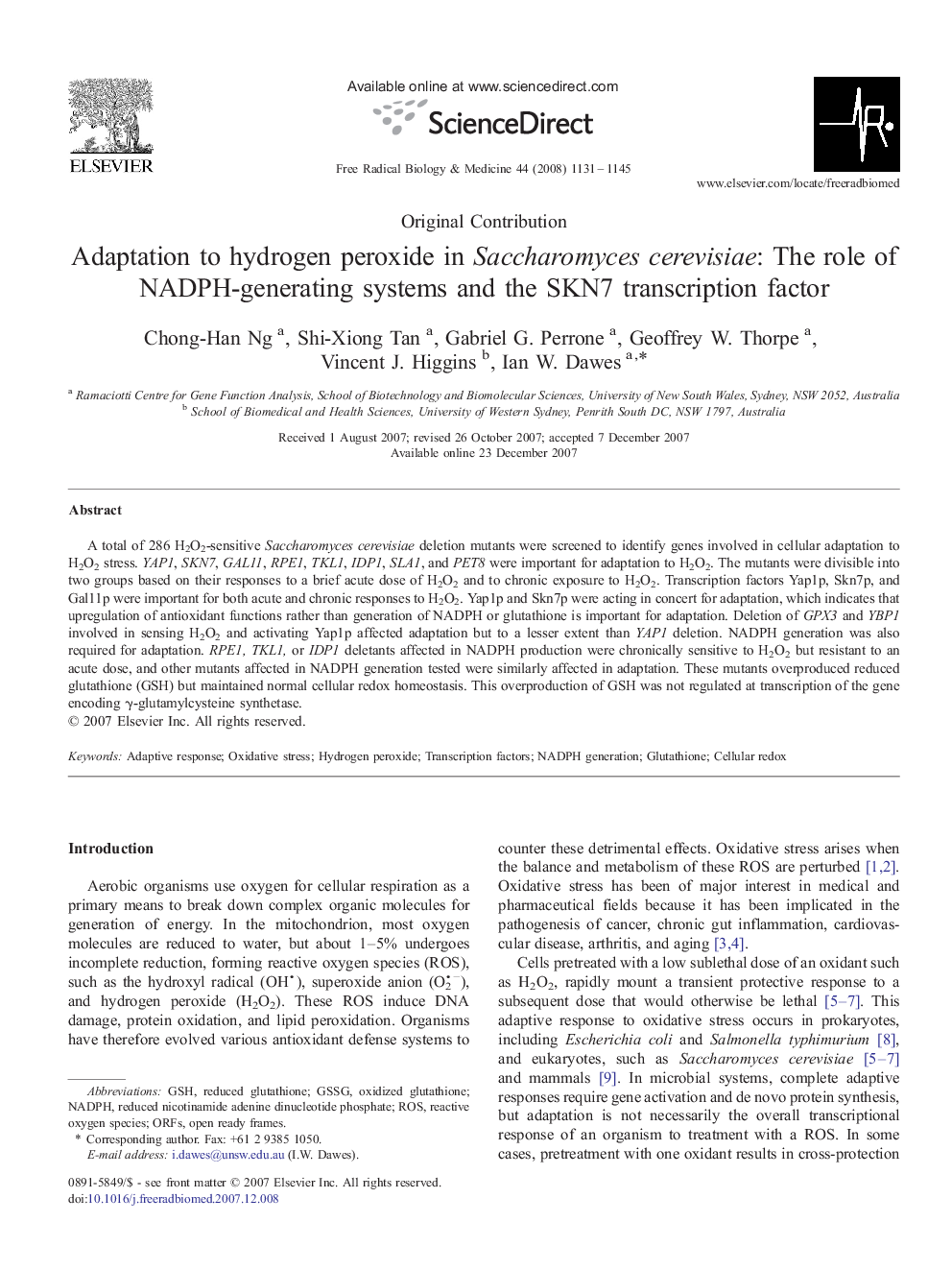| کد مقاله | کد نشریه | سال انتشار | مقاله انگلیسی | نسخه تمام متن |
|---|---|---|---|---|
| 1910798 | 1046787 | 2008 | 15 صفحه PDF | دانلود رایگان |

A total of 286 H2O2-sensitive Saccharomyces cerevisiae deletion mutants were screened to identify genes involved in cellular adaptation to H2O2 stress. YAP1, SKN7, GAL11, RPE1, TKL1, IDP1, SLA1, and PET8 were important for adaptation to H2O2. The mutants were divisible into two groups based on their responses to a brief acute dose of H2O2 and to chronic exposure to H2O2. Transcription factors Yap1p, Skn7p, and Gal11p were important for both acute and chronic responses to H2O2. Yap1p and Skn7p were acting in concert for adaptation, which indicates that upregulation of antioxidant functions rather than generation of NADPH or glutathione is important for adaptation. Deletion of GPX3 and YBP1 involved in sensing H2O2 and activating Yap1p affected adaptation but to a lesser extent than YAP1 deletion. NADPH generation was also required for adaptation. RPE1, TKL1, or IDP1 deletants affected in NADPH production were chronically sensitive to H2O2 but resistant to an acute dose, and other mutants affected in NADPH generation tested were similarly affected in adaptation. These mutants overproduced reduced glutathione (GSH) but maintained normal cellular redox homeostasis. This overproduction of GSH was not regulated at transcription of the gene encoding γ-glutamylcysteine synthetase.
Journal: Free Radical Biology and Medicine - Volume 44, Issue 6, 15 March 2008, Pages 1131–1145